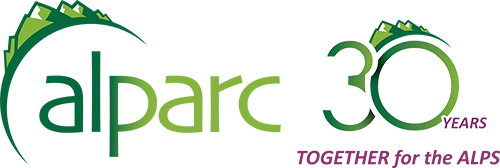Structuring a network comprising hundreds of institutions and protected-area administrators is a daunting task. This probably explains why ALPARC has achieved such great success as a kind of informal communal undertaking, albeit one that is also a de facto organization.
The new strategy entailing greater cooperation and integration with the Alpine Convention organisms, and at the same time greater independence as an association, aims to structure the existing organization from a legal standpoint. To this end, the growing number of projects and queries coming from the protected areas will be coordinated more efficiently. The sole valid legal status that such a communal undertaking can lay claim to is that of an association (in the legal sense of the term).
But as there is no type of association – for example under European law – that would be a better fit with ALPARC’s international structure, ALPARC’s International Steering Committee recommends that the founding meeting of the “ALPARC Association” should be held during the next Alpine week and at the 12th Alpine Conference in Switzerland . This would enable representatives of a maximum number of internationally active protected Alpine areas to gather with the aim of pooling their goals, energy and resources. A well structured network of active members (national representatives included) from throughout the Alpine region would serve the cause of productive cooperation and would open up a broader-based financing stream.
We call upon all protected areas to actively participate in the foundation meeting of the ALPARC association on 4 September 2012 in Val Poschavio, Switzerland. This founding meeting and general meeting of the network will also provide an opportunity for all concerned to discuss the underlying themes of ALPARC and to collaboratively develop key ALPARC projects going forward. It is vital that we strengthen this newly established network together. But to do this, the various protected areas simply must do their share – which means the following: lobbying local and regional political decision makers; disseminating information in the relevant regions, cantons and states concerning the collaborative efforts that the protected areas have been engaged in over the past 16 years, and the fruits these efforts have borne; doing PR concerning the importance of protected areas for the entire Alpine region and the role that each of the various protected areas play in the network; and proactively helping to find sources of financing for joint projects and events.
The financial burden of the joint activities in protected Alpine areas has been borne in its entirety so far by France and its alpine regions Rhone-Alpes and Provence-Alpes-Cote d’Azur, as well as by project-specific support from Germany, Switzerland, Monaco, Liechtenstein and private sponsors (MAVA Foundation, Heidehof Stiftung). Moreover, since 2003 the city of Chambéry has generously made the relevant infrastructure available free of charge to the Task Force Protected Areas at Maison des parcs et de la Montagne. We would like to take this opportunity to thank our French partners for their generous assistance.
But the time has come to establish a more robust platform that will foster international cooperation and development of the resources needed for it, in keeping with the slogan, Alpine Protected Areas: Together for the Alps!


